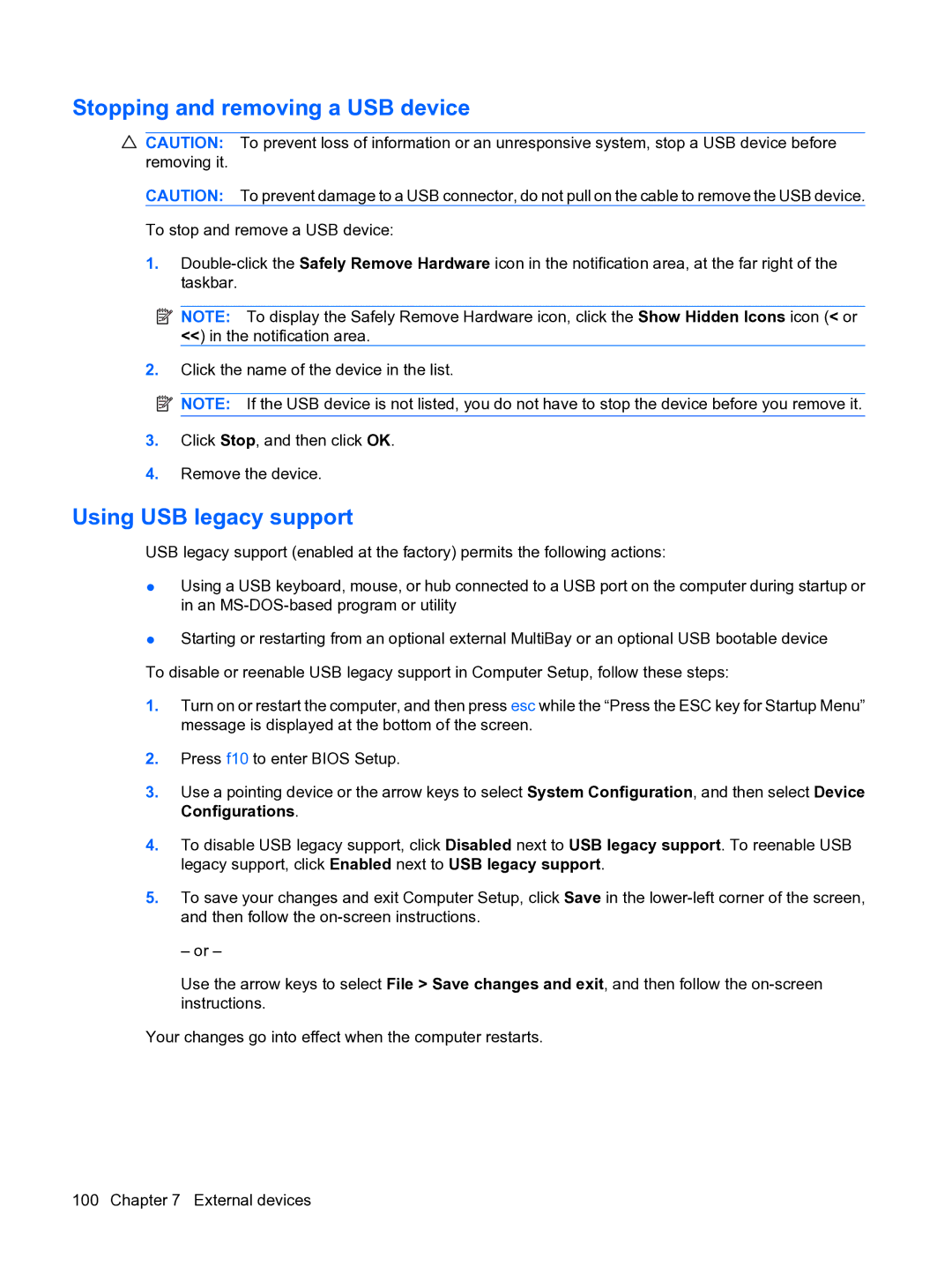
Stopping and removing a USB device
CAUTION: To prevent loss of information or an unresponsive system, stop a USB device before removing it.
CAUTION: To prevent damage to a USB connector, do not pull on the cable to remove the USB device.
To stop and remove a USB device:
1.
![]() NOTE: To display the Safely Remove Hardware icon, click the Show Hidden Icons icon (< or <<) in the notification area.
NOTE: To display the Safely Remove Hardware icon, click the Show Hidden Icons icon (< or <<) in the notification area.
2.Click the name of the device in the list.
![]() NOTE: If the USB device is not listed, you do not have to stop the device before you remove it.
NOTE: If the USB device is not listed, you do not have to stop the device before you remove it.
3.Click Stop, and then click OK.
4.Remove the device.
Using USB legacy support
USB legacy support (enabled at the factory) permits the following actions:
●Using a USB keyboard, mouse, or hub connected to a USB port on the computer during startup or in an
●Starting or restarting from an optional external MultiBay or an optional USB bootable device
To disable or reenable USB legacy support in Computer Setup, follow these steps:
1.Turn on or restart the computer, and then press esc while the “Press the ESC key for Startup Menu” message is displayed at the bottom of the screen.
2.Press f10 to enter BIOS Setup.
3.Use a pointing device or the arrow keys to select System Configuration, and then select Device Configurations.
4.To disable USB legacy support, click Disabled next to USB legacy support. To reenable USB legacy support, click Enabled next to USB legacy support.
5.To save your changes and exit Computer Setup, click Save in the
– or –
Use the arrow keys to select File > Save changes and exit, and then follow the
Your changes go into effect when the computer restarts.
100 Chapter 7 External devices
